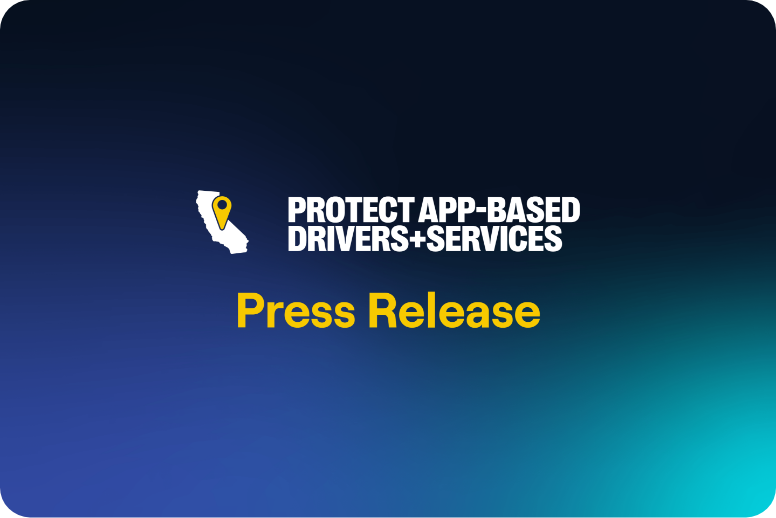By Dani Blum and Laura Vanderkam
Most days, Shawn Morse of Milwaukee can be found caring for his two young children while his wife works full time as a manager of neurology clinic research at the Medical College of Wisconsin. But after she comes home around 6 p.m., and the family has had dinner, Morse checks his apps: GrubHub, DoorDash, UberEats, Uber, Lyft, Instacart.
Morse’s flexible part-time gigs for the delivery and ride-sharing services bring in around $100-$150 per shift (and upward of $300 during snow storms). With his income, the family can pay for preschool, go to hockey games and “do all the things that we really want to do instead of being so budget-oriented.” Plus, as a mostly stay-at-home parent, “for me it’s therapeutic because the demanding part is taking care of the kids during the day,” Morse said. At night, “I’m just driving around the city listening to sports talk radio.”
In recent years, a growing number of parents like Morse have discovered the possibilities of the gig economy — short-term and freelance work increasingly enabled by app-based companies that rely on independent contractors to fulfill orders or supply services. Full-time jobs — or even fixed part-time hours — can be challenging amid caregiving responsibilities, but “people generally both want and need to work,” said Sara Sutton, the CEO of FlexJobs, a job board for remote, part-time and flexible work.
FlexJobs surveys have found that many parents who take career breaks want to keep working in some capacity. Even parents who have full-time jobs may want extra income without the structure of a traditional part-time role. “It’s a chronic need, and the gig economy is filling that,” Sutton said. “You can turn time into money by fitting work in where otherwise you would not have been capable of fitting it in.”
Of course, the gig economy has downsides too, particularly for parents — long hours that don’t guarantee paychecks, yet still require time away from family members. Still, for many families, gigs have become an important tool for making modern life work.
Samantha Kruger of Rockford, Ill., drives for DoorDash and GrubHub while her 12-year-old daughter is at school, at volleyball practice or with her father every other weekend. If she wants to work at other times, she enlists a group of parents who watch each other’s children during gigs.
“There are a lot of single parents that do this,” she said. “At least in our little close-knit community, it takes a village.” The extra income — a good week generates $200 — allows for little splurges, like mini-vacations to nearby Chicago. She also uses gig pay to help her parents financially.
Kruger values the flexibility: “I can determine my own hours, that’s what’s so great about it,” she said. “I’m not working for ‘the man.’”
Workers have always freelanced, and entrepreneurs have always had some control over their schedules. But building a business takes time, something parents often find in short supply. Parents report that the key upside of the app-based gig economy is that it supplies a quick way to earn money without a great business idea — though multiple interviews with parents working with gig economy apps suggest that those who think through costs and opportunities tend to do better.
John D. Hawkins of Portland, Ore., a father of two, drives for GrubHub to supplement his main I.T. job, and to help his family pay off debt. “With the way my job works, I never know when I’m going to get off,” he said, making a traditional second job challenging. At first, he took any food order, no matter how small dollar-wise. But after his wife, functioning as his bookkeeper, began tracking his gas mileage and calculating his net earnings after subtracting fuel and other expenses, his approach changed. “What we started doing was trying to be a little bit more picky with the orders,” he said. The goal was to make at least $20 per hour.
This can be challenging; gig economy workers face a lot of variability and risk, since they aren’t paid by the hour as employees would generally be, with pay subjected to minimum wage and overtime laws. Drivers for restaurant delivery apps have reported restaurants not cooking the orders until they show up, necessitating extra waits that a company paying delivery workers by the hour would push back on. Safety can also be a concern; according to data from Uber, 42% of reported sexual assaults that occurred in Uber rides were reported by drivers.
As delivery apps try to boost volume, and compete with new apps, many don’t discourage customers from placing inexpensive orders (which produce low earnings and tips for the time they take). Gig workers can often choose whether to accept orders, but acceptance rates can affect a driver’s quality ratings and future business. Pay algorithms can also change, plus tipping is highly variable.
Despite optimizing his revenue, Hawkins said his net hourly earnings have dropped to $16-18 per hour. He recently accepted a new, higher-paying day job, so he and his wife have decided he’ll quit his delivery gigs, which are “just not worth it anymore.”
In an effort to protect contract workers from these downsides, federal and state regulators have started looking more closely at the gig economy. California’s A.B. 5 bill, which became law in January, created a stricter test for whether someone is an employee — who would generally be paid by the hour or a salary, with more of the risk falling on the employer — or an independent contractor responsible for their own payroll taxes and benefits. The stated goal of such bills is to protect workers, though there are always trade-offs. Among other things, the law limited freelance writers to 35 articles per year for a publication; people writing more than that would need to be classified as employees. Vox Media ended freelance contracts with about 200 California-based writers in response, saying that they would be replaced with a smaller number of employees.
“As the gig economy grows, states may see that as a threat to their tax base,” said Milt Toby, a lawyer and the president of the American Society of Journalists and Authors, which is suing California over the bill. “States can rely on employer withholding better than they can rely on an independent contractor paying quarterly taxes.”
Toby noted that his organization is not opposed to protections for gig economy workers, but it advocates for those who want to be independent contractors — including people with caregiving responsibilities. “I’m talking to you from my office that’s next to my bedroom,” he said. “I like having the ability to do that.”
Even gigs that don’t involve working from home have passionate defenders. Robert Meagher, who lives outside Dallas, delivers food and drives customers on weekends, in part to pay for his 14-year-old daughter’s club volleyball expenses. But even if it weren’t for volleyball, he said, he’d keep at it. “It’s addicting,” he said. “I don’t want to say it’s easy, but I mean it really is.”
Dani Blum is a news assistant at The New York Times. Laura Vanderkam is the author of “I Know How She Does It: How Successful Women Make the Most of Their Time” (Portfolio, 2015), and “Juliet’s School of Possibilities” (Portfolio, 2019).
The Latest News

Opinion
I’m an Instacart driver: California Supreme Court must protect my job
By Stephanie Whitfield It may sound dramatic to say that app-based driving saved my life, [...] Read more
News
As Prop. 22 heads to California Supreme Court, support doesn’t break along ideological lines
By Bob Egelko Proposition 22, the 2020 ballot initiative sponsored by Uber and Lyft that [...] Read more